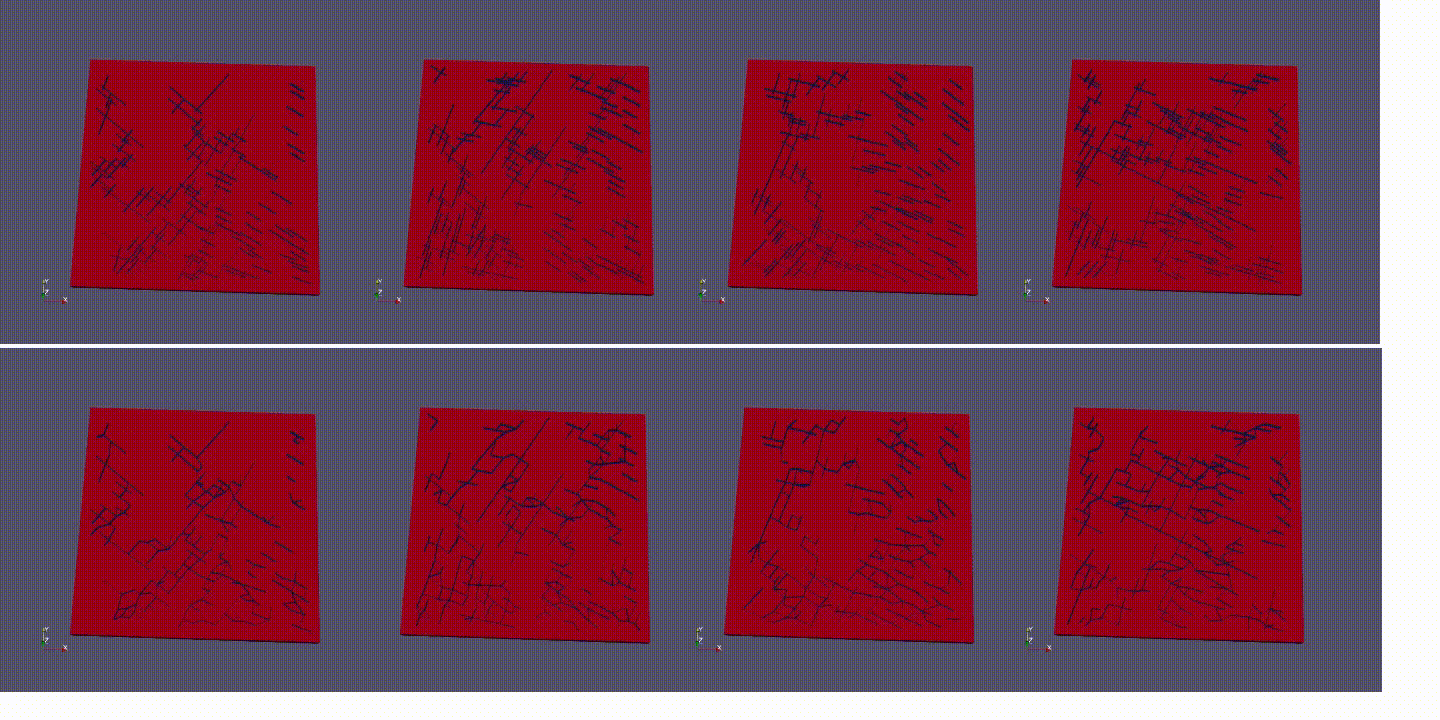Performing uncertainty quantification on a large (high-fidelity) ensemble of Discrete Fracture Models (DFM) can become computationally unfeasible. With an advanced coarsening strategy for fractured reservoirs, the numerical solution can be evaluated as a different coarse level with a certain gain in simulation performance. In terms of main flow patterns, it is therefore expected that the resulting coarser representations are still very much suitable as a diagnostic tool for classifying the full ensemble of models. In Fig.9, the temperature distribution for geothermal application in typical carbonate reservoir is shown for four ensemble members at coarse and fine scales. 
Fig.9: Temperature distribution for four members of ensemble at fine (upper row) and corse (lower row) scales.
Using the well rates, pressure, and field-scale production data from the coarse simulation results, a clustering algorithm can be performed to select ensemble representatives based on continuous Multi-Dimensional Scaling9. Once the ensemble representatives are determined at a certain coarse scale (relative fast procedure), the full stochastic response can be reconstructed for fine-scale. In Fig.10, this procedure is illustrated for full ensemble with members shown in Fig.9. 
Fig.10: Clustering of MDS distances for coarse (a) and reconstruction of stochastic response at fine scales (b).
